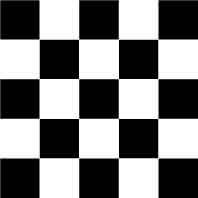By Daniel Connolly, William Fairman, and Qingmu Deng
The discovery of high frequency switchings of commercial LED lightbulbs offers a new approach to wireless communication through visible light. In this project we aimed to transmit photos through LED lightbulbs over distance comparable to that of a desktop lamp. Over the course of the project, we ended up producing a wireless system that in the end was able to transmit a 200,000 bit data packet over a 25in distance with 2% accuracy. Our final report can be found here.
This repository contains all of the code we used to turn an image into a 4-QAM data packet as well as turning received data back into an image. The repository also contains examples of transmitted and received data packets located in \data\. These files are stored in a binary .dat format.
All of the image conversion code is found in ImageQAM.mlx. Running the tx generation portion of the code will generate a file txname.dat that is ready to transmit over light via gnuradio. Running the rx processing code will look for a file rxname.dat and convert that image into a black and white image.
The two images we transmitted are located below. While any image can be processed by our code, we recommend using smaller images to keep them within the 200,000 bit data limit.
Due to some of our received data files having a relatively high error rate, you may have to specify the row width of the received image in order to properly transform rxname.dat into an image.
We used the gnuradio-companion gui in Ubuntu to read and write .dat and communicate with USRPs to transmit and receive the data. These data files, however, should work on most USRP systems and accompanying software.
The physical setup of our project can be seen below. For this lab we used a standard LED bulb you could find at any department store, an avalanche photodetector and low pass filter from ThorLabs, a voltage bias and signal amplifier to move the signal into a linear regime acceptable for the lightbulb, and two USRPs to transmit and receive our .dat over a QPSK signal.


